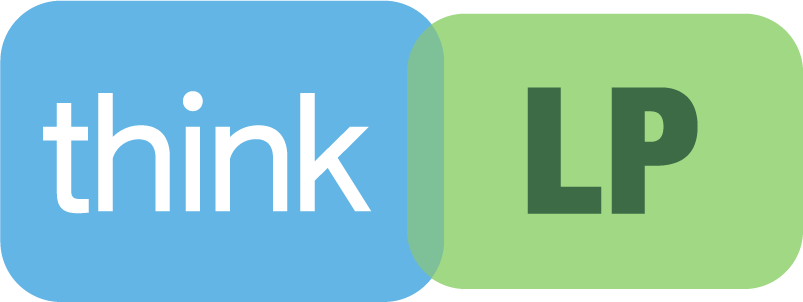Key Takeaways:
-
- A holistic LP ecosystem integrates technology, people, and processes for effective risk management.
- A centralized LP/AP platform consolidates data, acting as the data backbone for informed decision-making.
- Cross-departmental collaboration and structured processes enhance the efficiency and impact of LP/AP initiatives.
- Transitioning to a unified LP/AP ecosystem unlocks efficiencies, improves data insights, and strengthens collaboration.
What Is an LP Ecosystem?
An LP ecosystem is a strategy that enables LP/AP departments to address modern challenges with agility. It integrates technology, people, and processes, with a centralized platform consolidating data. Dedicated teams and structured workflows provide support, creating a solution for managing risk, reducing loss, and improving organizational resilience.
What Are the Challenges of Isolated Point Solutions?
Traditional point solutions have limitations when used separately. An LP/AP ecosystem addresses these challenges through a centralized platform, collaborative teams, and structured processes:
-
- Data Siloing: Isolated tools limit access to a full organizational view of data. By centralizing functions in one platform, the ecosystem reduces fragmentation, enabling timely decisions.
- Communication and Collaboration: Data across multiple systems complicates communication and task prioritization. The unified ecosystem provides a single source of information, fostering a collaborative approach to data interpretation and action.
- Labor Inefficiencies: Switching between systems disrupts focus and reduces productivity. By consolidating functions into one platform, the ecosystem improves efficiency and allows teams to focus on high-value tasks.
- Implementation and Maintenance: Maintaining separate systems demands resources. The unified platform simplifies onboarding and training, enabling adoption and alignment with organizational needs.
- Training and Development: Training employees on multiple systems can be time-consuming. A single-platform approach reduces the learning curve, allowing team members to become proficient quickly and work effectively.
- Expense: Managing multiple tools can be costly. A unified ecosystem consolidates tools and reduces the need for redundant solutions, making it a cost-effective option.
- Measuring ROI: Centralizing LP/AP tasks in one ecosystem allows for a clear assessment of the platform’s impact on loss reduction and efficiency.

The Three Pillars of an Effective LP/AP Ecosystem
An effective LP/AP ecosystem combines technology, people, and processes to support loss prevention and asset protection.
-
- Technology: A centralized LP/AP platform consolidates data and enables data management, reporting, and monitoring. It offers an interface where teams can access information and insights, streamlining workflows and facilitating decision-making. By serving as the primary tool, the platform supports LP/AP tasks and provides a foundation for data-centric risk management.
-
- People: Success in LP/AP requires the expertise and collaboration of the LP/AP team and other stakeholders. Cross-departmental involvement ensures that business areas work together, contributing to risk mitigation. LP/AP teams coordinate with operations, HR, and customer service, ensuring that the ecosystem’s insights translate into organization-wide actions.
-
- Processes: Structured workflows and policies guide the use of the LP/AP ecosystem, ensuring data integrity and accountability. Processes such as incident reporting, compliance tracking, and response protocols provide a standardized approach that supports consistency, aligns with organizational goals, and maximizes the platform’s effectiveness.
What Are the Cross-Departmental Benefits of an LP/AP Ecosystem?
To run an effective LP/AP department, the team must collaborate with business partners. Implementing an LP/AP ecosystem provides data-sharing capabilities that enhance collaboration across departments, facilitating workflows and stronger decision-making. The platform supports insights and reports for each department, aligning with specific functions and goals.
Departments that benefit from an LP/AP ecosystem include:
-
- Operations: Monitor execution, identify inefficiencies, conduct audits, and leverage insights for action plans.
-
- Customer Service: Identify service issues, allowing customer-facing departments to improve processes.
-
- Sales and Marketing: Refine strategies, create campaigns, and boost engagement with data on customer behavior and preferences.
-
- Supply Chain: Identify transit risks, enable logistics planning, and reduce product loss during transit.
-
- Human Resources: Refine hiring practices, enhance training programs, and contribute to a safer work environment.
How Can ThinkLP Help Build an LP Ecosystem?
ThinkLP offers a platform that serves as the data backbone of an LP ecosystem, enabling teams to consolidate data and streamline workflows. Organizations can integrate incident reporting, case management, and analytics into a single system, improving collaboration and decision-making. The platform also supports tailored insights and reports for each department, aligning with specific functions and goals.
Final Thoughts
Transitioning to a unified LP/AP ecosystem unlocks efficiencies, improves data insights, and strengthens collaboration. By moving beyond solutions and embracing a holistic approach, organizations can manage risks, enhance safety, and support broader business objectives. An LP ecosystem is not just about preventing loss; it’s about creating a resilient and efficient organization.
Explore ThinkLP’s Blog
Now that you know about the LP ecosystem, you can find additional insights on loss prevention and safety intelligence on ThinkLP’s blog. The blog features articles, case studies, and industry insights that provide practical tips and strategies for improving your loss prevention efforts.
Request a Demo
If you are interested in how ThinkLP’s software can support your loss prevention initiatives, we invite you to request a demo. Their Loss & Safety Intelligence Platform is designed to integrate with your existing operations, helping you reduce risks and improve efficiency. Reach out today to learn how ThinkLP can assist your organization in optimizing its loss prevention strategy.


